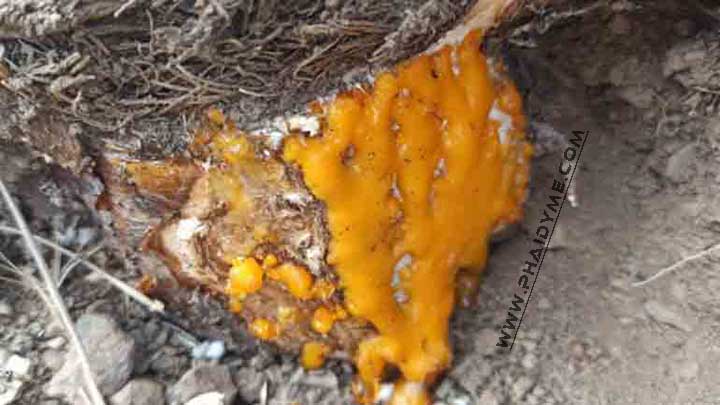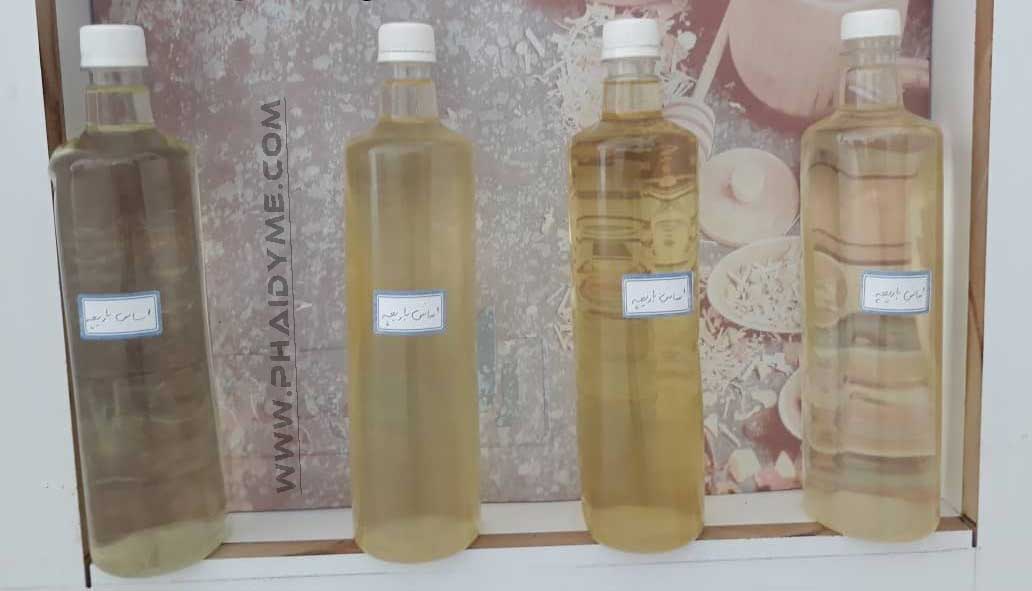Buy Iranian Galbanum from gum resin specialists
| Country | Common names |
|---|---|
| English | Galbanum |
| Saudi Arabia | Qana |
| Germany | Galbanharz |
| Spain | Gálbano |
| Russia | Гальбан |
| China | 䭱齊 |
| Catalans | Gàlban |
| Hebrew | חלבנה |
| South India | ഗാൽബാനം |
| Heading | Description |
|---|---|
| Scientific name | Ferula gummosa |
| Author | Boiss. |
| Family | Umbelliferae |
| Heterotypic Synonyms | Ferula erubescens Boiss. Ferula galbaniflua Boiss. & Buhse. Peucedanum galbanifluum (Boiss. & Buhse) Baill. |
| Pharmaceutical Grade | 2 |
| Food Grade | 2 |
| Galbanum in persian | باریجه، قاسنی، بارزد، بالنبو |
| Heading | Description |
|---|---|
| Plant height (m) | 1 |
| Canopy Width (m) | 1 |
| Growth form | Perennial |
| Does the plant fix nitrogen? | No |
Full sun
| Heading | Description |
|---|---|
| Ideal soil texture | Light (sand), medium (loamy), heavy |
| Is the plant able to grow in poor soil? | No |
| Does the plant grow in heavy clay soil? | No |
| Soil pH | Acidic, neutral, alkaline (basic) |
| Does the plant growth in highly acidic soils? | No |
| Does the plant grow in highly alkaline soil? | No |
| Humidity | Dry soil, humid soil |
| Does the plant need well-drained soil? | Yes |
| Heading | Description |
|---|---|
| Is the plant self-pollinating? | Yes |
| Type of flower | Male and Female |
| How to pollinate | Insects |
Spices
Flower
Napiform roots
| Heading | Description |
|---|---|
| Sea level | 2100 - 4000 |
| Climate |
|
| Land slope in degrees | 10 - 90 |
| Annual rainfall volume (mm) | 250 - 700 |
| Standard temperature (Annual - C°) |
|
Please do not use in the following conditions and situations:
- People with cardiovascular diseases
- People with high blood pressure
- Pregnant women
- Breastfeeding period
- Infants
- Oral administration with non-standard dosage
Note: Before using topically, be sure to consult with your doctor to avoid skin allergies.
Overview of Galbanum
| Heading | Description |
|---|---|
| Scientific name of the productive plant | Ferula gummosa Boiss |
| Season of extracting plant gum resin (On average) | Mid-June to late September |
| The best time to buy in bulk | October |
Rating of Galbanum resin
| Heading | The amount of insoluble material in 90% alcohol |
|---|---|
| Best | up to 10% |
| GR (A) | (11 - 25) % |
| GR (B) | (26 - 35) % |
| GR (C) | (36 - 50) % |
Note: The amount of total ash should not exceed 10% in none of the above cases; because the quality of Galbanum is determined by the remaining ash after burning.
Comparison of Galbanum essential oil between the best harvest poles in Iran
COORD | EOs (%v/w) | CMPD (N) |
|---|---|---|
36.1629° N, Hide E | 24 | 41 |
35.7594° N, Hide E | 22 | 56 |
36.9947° N, Hide E | 22 | 50 |
The main components of Galbanum essential oil extracted from coordinates
36.1629° N, Hide E
| Row | CMPD | Amount (%) |
|---|---|---|
| 1 | β-Pinene | 48.27 |
| 2 | Guaiol | 7.41 |
| 3 | α-Pinene | 4.61 |
| 4 | 1,3,5-Undecatriene | 3.19 |
The main components of Galbanum essential oil extracted from coordinates
35.7594° N, Hide E
| Row | CMPD | Amount (%) |
|---|---|---|
| 1 | β-Pinene | 25.88 |
| 2 | α-Pinene | 12.72 |
| 3 | δ-3-Carene | 8.72 |
| 4 | Limonene | 5.48 |
The reason for the difference in the main components of Galbanum essential oil in Iran
Note: Extraction of Galbanum resin at different times, even with a short interval, can affect the number of its active ingredients, biological activity, and its industrial and food applications.
Where does the scent of Galbanum derive from?
Galbanum oil is an operational substance in the industry and has a strong green odor with the following elements:
What’s the meaning of green odor?
In the world of fragrances, green is used to describe a fresh, light, cool, or spicy scent.
This scent is reminiscent of chopped green leaves, cucumber, chopped green bell pepper, or fresh peas in the pod.
Many people assume that because monoterpenes are the main components of Galbanum oil; therefore, the scent of Galbanum is also caused by them.
But, the α-Pinene and β-Pinene can be found in resin extraction from wild pistachio trees (Pistacia atlantica Desf.) or Frankincense, but are resin of wild pistachio and Frankincense the same in terms of scent?!
After reviewing the research that has been done so far; Phaidyme experts realized that small amounts of Pyrazines play a significant role in creating the scent of Galbanum.
The chemical structures involved in creating the scent of Galbanum resin are the following:
| Row | Chemical structures |
|---|---|
| 1 | (6Z,8E)-undeca-6,8,10-trien-3-one (2a) |
| 2 | (6Z,8E)-undeca-6,8,10-trien-4-one (3a) |
| 3 | (6E/Z,8E)-undeca-6,8,10-trien-3-one (2) |
| 4 | (6E/Z,8E)-undeca-6,8,10-trien-4-one (3) |
Note: Compounds 3 and 4 were identified for the first time in 2009 only in Galbanum oil; not in other natural products.
Types of Galbanum according to the structure of plant resin
1. TEAR
As a result of insect bites, natural scratches, or cracks on the stem of the plant, a resin is secreted, which is called “Tear Galbanum”. The exuded resin gradually hardens in the vicinity of air and usually separates from the stem of the plant. The color of Tear Galbanum resin is white at the beginning after oozing from the stem, and over time, in the vicinity of air and exposed to sunlight, it changes color to orange-red color. This type of Galbanum resin maintains its softness for a long time; but over time, it becomes hard and brittle so that it crumbles due to impact. The amount of Tear Galbanum resin is low and it is also more expensive. If you put Tear Galbanum on a flame (exposed to heat), it will burn like frankincense. Its taste is bitter and pungent with a strong and unpleasant smell. If Tear Galbanum resin is mixed with water, it easily turns into an emulsion, so 25% of it enters the water.
3. LIQUID (HONEYED)
Liquid Galbanum resin is called “Honeyed Galbanum”. It is a thick resin like honey with a sharp and penetrating smell and similar to the smell of celery, yellow to brown with a bitter taste. This Galbanum resin is secreted out due to longitudinal or transverse cutting of the collar part of the plant, and according to the latest reviews by Phaidyme experts, it has an average of 25-30% essential oil. Liquid Galbanum resin can also be obtained from Mass Galbanum refining.
2. MASS
In the morning, exposure to the sun, they first move the soil around the plant and dig a pit with an average depth of 20 cm around it; then the plant is cut from the collar. This way, the Galbanum resin gradually oozes and collects in the pit. Once a week, by cutting a layer with a diameter of 0.5 centimeters below the previously cut place, so-called, they refresh the wound and cause Galbanum resin to ooze, and this operation continues regularly until the maximum Galbanum resin is extracted. By stacking the collected Galbanum resin at different times, a bulky mass with an irregular appearance called a “Mass Galbanum” is created. This mass is usually creamy white and mixed with foreign materials and impurities.
Types of Galbanum according to the structure of plant resin
1. TEAR
As a result of insect bites, natural scratches, or cracks on the stem of the plant, a resin is secreted, which is called “Tear Galbanum”. The exuded resin gradually hardens in the vicinity of air and usually separates from the stem of the plant. The color of Tear Galbanum resin is white at the beginning after oozing from the stem, and over time, in the vicinity of air and exposed to sunlight, it changes color to orange-red color. This type of Galbanum resin maintains its softness for a long time; but over time, it becomes hard and brittle so that it crumbles due to impact. The amount of Tear Galbanum resin is low and it is also more expensive. If you put Tear Galbanum on a flame (exposed to heat), it will burn like frankincense. Its taste is bitter and pungent with a strong and unpleasant smell. If Tear Galbanum resin is mixed with water, it easily turns into an emulsion, so 25% of it enters the water.
2. MASS
In the morning, exposure to the sun, they first move the soil around the plant and dig a pit with an average depth of 20 cm around it; then the plant is cut from the collar. This way, the Galbanum resin gradually oozes and collects in the pit. Once a week, by cutting a layer with a diameter of 0.5 centimeters below the previously cut place, so-called, they refresh the wound and cause Galbanum resin to ooze, and this operation continues regularly until the maximum Galbanum resin is extracted. By stacking the collected Galbanum resin at different times, a bulky mass with an irregular appearance called a “Mass Galbanum” is created. This mass is usually creamy white and mixed with foreign materials and impurities.
3. LIQUID (HONEYED)
Liquid Galbanum resin is called “Honeyed Galbanum”. It is a thick resin like honey with a sharp and penetrating smell and similar to the smell of celery, yellow to brown with a bitter taste. This Galbanum resin is secreted out due to longitudinal or transverse cutting of the collar part of the plant, and according to the latest reviews by Phaidyme experts, it has an average of 25-30% essential oil. Liquid Galbanum resin can also be obtained from Mass Galbanum refining.



















